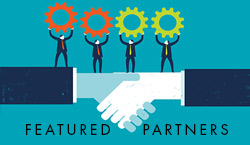





|
The answer is strategic standardization, and it is vital in making everyday life work.
The U.S. Department of Commerce (DOC)'s International Trade Administration (ITA) reports that 92 percent of U.S. goods exports are affected by standards and technical regulations. From design and manufacturing to distribution and market access, all aspects of your industry’s products and services are affected at some point by standardization.
From design and manufacturing to distribution and market access, all aspects of your industry’s products and services are affected at some point by standardization.
But how much of an impact are we talking? Just ask the U.S. Department of Defense, which is projecting $789 million in cost avoidance over just one of their programs. How did they do it? They focused on parts standardization and process standardization.
Or ask the electrical fire safety industry. By collaborating on a critical standard for Arc Fault Circuit Interrupters, the National Electrical Manufacturers Association, the National Fire Protection Association, and Underwriters Laboratories have helped to prevent more than 40,000 home fires, over 350 deaths, and more than 1,400 injuries each year.
Or ask Deere & Company, whose agriculture and construction equipment is exported and used around the world. By participating in standards development for component pieces like fittings and fasteners, Deere knows that these components will meet their needs “off the shelf.” And the more standardized components they can use, the less they, and their customers, have to pay.
By participating in standards development activities – and by implementing standards and conformance tools – each of these organizations has been able to streamline processes, trim costs, earn and maintain market access, and boost their bottom line.
Want to learn more? The next tab tells you all about the value of standards to industry, government, consumers, young or emerging standardization professionals, and students.
You can also read case studies that describe how companies, organizations, and government agencies are relying upon strategic
standardization to meet their goals, and learn how to get involved in the American National Standards (ANS) process.
"As a professional society, HIMSS Interoperability & Standards (I&S) Committee was formed in July 2012 in order to further advance the HIMSS strategic topic of semantic interoperability and standardization leading to successful exchange and re-use of health information. This I&S Committee consists of key health IT volunteers and multidisciplinary experts in the fields of interoperability and standards."
– Mary-Ellen Devitt Johnson
HIMSS
|